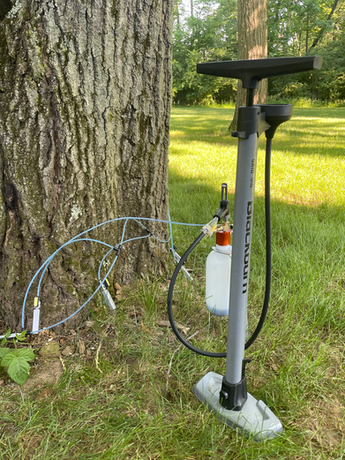
integrated pest management
There are 3 key factors in developing any integrated pest management program: early detection, species identification/disease and pest identification, and the right application method including the appropriate time during the season.
Detecting an issue before it reaches damaging levels may be the single most important factor in a sound integrated pest management program. Many times if levels are not high, a less invasive, possibly organic method of treatment can be used to suppress the disease or infestation. Whenever possible organic, insect specific treatments are highly recommended. Broad-based insecticides can be more harmful to the environment and can kill beneficial insects that help keep destructive insects in check.
Identification of the host species, and the disease or pest that is present can be challenging to an inexperienced arborist. It takes extensive time in the field to confidently identify the host plant and its disease or insect infestation. New cultivars of trees and shrubs are constantly being developed in nurseries and new exotic plants are being brought to areas outside of their intended range. Staying on top of these new developments in species and insects/diseases is an ongoing process. Our staff is constantly reviewing current trends and attending continuing education seminars throughout the year to stay up to date on these issues. Remember, prescription without proper diagnosis is malpractice.
Once an infestation has been detected and the species and the disease has been properly identified, a treatment plan can be developed. Many times this plan depends on the time of detection, and when the disease or pest are at their most vulnerable life cycle stage. Applications can render less favorable results if not properly timed with the seasons or stages of the insect. Again, whenever possible organic, insect specific treatments are highly recommended. Broad-based insecticides can be more harmful to the environment and can kill beneficial insects that help keep destructive insects in check. We also try to utilize application methods that provide minimal exposure to the environment and inadvertent contact to non-targeted trees and shrubs. For example, we may choose to administer a soil injected fungicide that is tree specific rather than a foliar spray that could potentially drift onto other trees and shrubs that are away from the targeted area or tree and shrub.
Address
1006 Clay Avenue
Tyrone, PA 16686
Phone
(814) 312-1599














